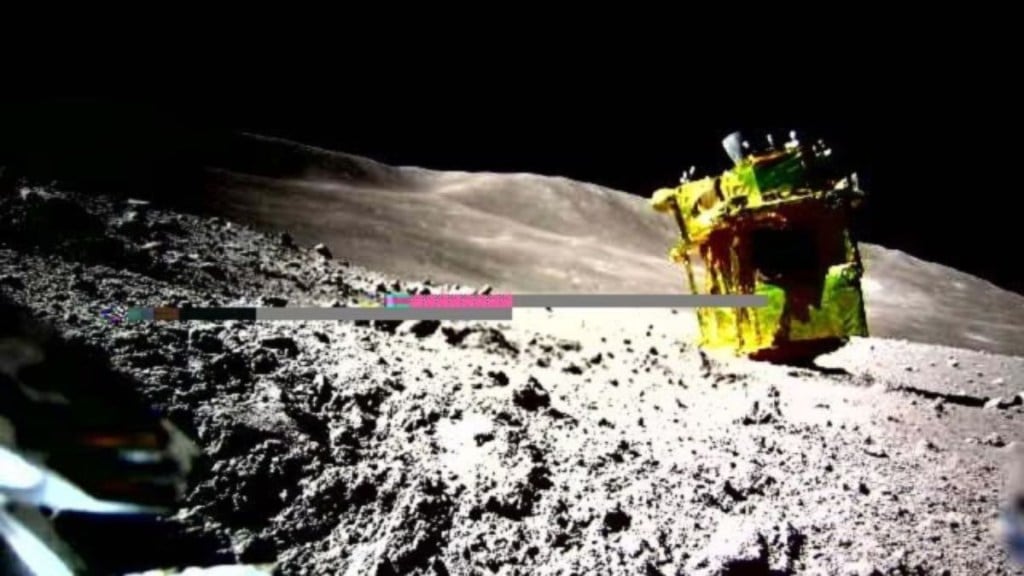There is a possibility that clues about the origin of the Moon can be provided since an unmanned lunar spacecraft has captured and transmitted data after analyzing 10 lunar rocks, a Japan space agency official said Wednesday.
For four days, Shinichiro Sakai, the project manager at the Japan Aerospace Exploration Agency, reported that the Smart Lander for Investigating Moon (SLIM), which touched down on the lunar surface last month, has been actively utilizing its multi-band spectral camera to analyze the composition of rocks and conducting examinations of lunar rock samples.
Japan’s first lunar mission saw the spacecraft achieve a historic moment with its precise touchdown on January 20th. The landing of the spacecraft was flawed as it touched the lunar surface upside down, rendering its solar panels unable to receive sunlight. As a result, after a brief communication with Earth, it was powered off. Remarkably, on the eighth day, the spacecraft resumed operations, enabling it to successfully reestablish communication with the command center at JAXA on Earth.
A black-and-white photo sent shortly after SLIM resumed operation displayed the uneven lunar surface, featuring six rocks. Eventually, the spacecraft collected data from a total of 10 rocks, each named after dog breeds like “Akitainu,” “Beagle,” and “Shibainu.” “We anticipate that analyzing these rocks will provide insights into the moon’s origin,” Sakai stated. He explained that comparing the mineral compositions of moon rocks with those of Earth could reveal common elements. According to the “giant-impact” hypothesis, the moon formed when Earth collided with another planet, resulting in a smaller mass breaking away.
The JAXA team originally anticipated SLIM to examine just one rock, so obtaining data from 10 rocks was a reason for celebration. This achievement has spurred the team to further investigate the origins of the moon.
SLIM is currently in a state of “hibernation” during another lunar night, which will persist until late February. Whether the probe and its spectroscope will endure the harsh cold temperatures of the night and reactivate once sunlight returns remains uncertain.
The spacecraft landed approximately 55 meters (60 yards) away from its intended target, close to the Shioli crater, an area characterized by volcanic rocks. This landing marks the most precise one compared to past moon missions, which usually targeted flat areas at least 10 kilometers (6 miles) wide.
JAXA stated that if the lander hadn’t experienced a last-minute failure in one of its two main engines, resulting in a harder-than-planned landing, SLIM’s touchdown would have been estimated to be within meters of the target.
Japan’s successful landing on the moon marked the country as the fifth in the world to achieve this feat, following the United States, the Soviet Union, China, and India.
SLIM carried two autonomous probes that were released just before the touchdown. These probes recorded the landing, surroundings, and other lunar data. Having fulfilled their mission of capturing SLIM’s initial activities, the two small probes have ceased functioning.

